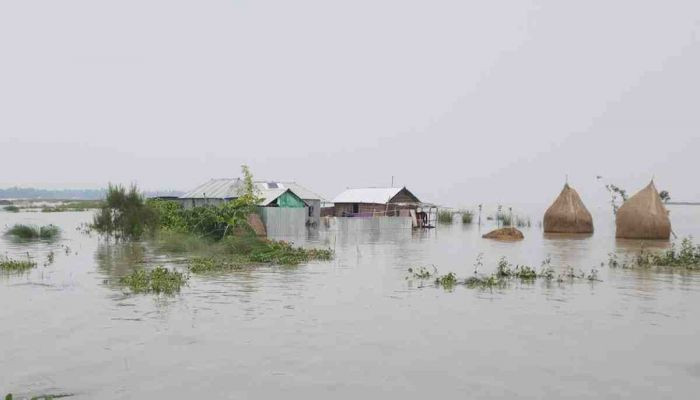
Desk Report
Publish: 07 Aug 2020, 01:04 pm

Bangladesh is one of the hotspots of a series of floods across the country, according to the latest study, with 250 million coastal dwellers experiencing increasing floods worldwide.
The study lists a set of hotspot floods around the world.
These include South-East China, Australia's Northern Territory, Bangladesh, West Bengal and Gujarat, India, North Carolina, Virginia and Maryland, and North-West Europe, including the United Kingdom, Northern France and Northern Germany.
The new map of risks takes no account of existing flood defences but highlights the levels of threat to come, reports UNB.
"It is important work from a strategic point of view, as it provides governments with a realistic assessment of the threats and costs that we face and a justification for change," said Ian Young, an engineer at the University of Melbourne, and co-author of the report.
"These data should act as a wake-up call to inform policy at global and local government levels so that more flood defenses can be built to safeguard coastal life and infrastructure."
In the next 80 years, flooding across the planet's land masses are expected to increase by about 50%, placing several millions of coastal dwellers at risk. If humans choose to consume more and more fossil fuels while burning ever more natural resources, another 77 million people will be at risk of floods, an rise of 52%.
And these floods – increasingly frequent and widespread across larger areas – will put cities, homes, resorts and industries worth more than $14 trillion at risk.
This volume alone is worth 20% of global GDP, the economist 's favorite measure of economic safety and prosperity, according to a recent analysis in the journal Science Reports.
The researchers built their argument on historic data from 681 tide-gauge stations around the world to model the growing hazard at 10,000 coastal locations, according to Climate News Network.
“Compared with now, what we see as a one-in-100-year extreme flood event will be ten times more frequent because of climate change,” researchers said.
They conclude that the land area exposed to extreme flood will increase by more than 250,000 sq kms – an increase of 48 percent – to 800,000 sq kms, a threat to 252 million people.
“A warming climate is driving sea level rise because water expands as it warms, and glaciers are melting. Climate change is also increasing the frequency of extreme seas, which will further increase the risk of flooding,” said Ebru Kirezci of the University of Melbourne, Australia, who led the study.
“What the data and our model are saying is that compared with now, what we see as a one-in-100-year extreme flood event will be ten times more frequent because of climate change.”
None of this should come as a surprise to civic authorities, governments, hydraulic engineers and oceanographers: researchers have been warning for years that global warming-driven coastal floods will end up costing vast and seemingly ever-increasing sums.
Globally and regionally, the story remains the same, and rich and developed societies in Europe and the US face the same rising tide of hazard as the world's poorest in the crowded coastal cities of Africa and Asia.
Estimate too low?
A mix of more extreme storms and storm surges, combined with ever higher sea levels, will sweep away the world’s beaches and turn millions of comfortable US citizens into climate refugees.
It is even possible that researchers have underestimated the hazard simply because satellite-based measurements may have misread accurate land elevation: in some cases, coastlines are sinking independently of rising sea levels.
Subscribe Shampratik Deshkal Youtube Channel
© 2024 Shampratik Deshkal All Rights Reserved. Design & Developed By Root Soft Bangladesh